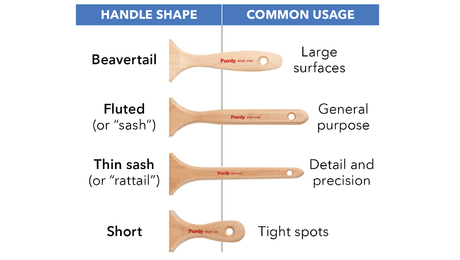I have a request of some advice from you all regarding a project I’m working on – installing hardwood flooring.
I have Brazilian walnut hardwood floor 3/4″ x 5″ (very hard – twice as hard as oak on the Janka scale) and am installing it on top of 3/4″ plywood subfloor. I followed all procedures as written in the manual – including using a pneumatic nailer and L-cleats. However, when I tried that, the tongues of the boards kept splitting. Changes in pressure and all kinds of messing around didn’t help with the splitting.
Eventually I gave up and started predrilling and hand nailing each individual board. I used a 3/32 drill bit and put in 6d finishing nails. However, I’m worried that I would not get enough gripping power from the 6d nails so I went up to the 8d nails and used a 7/64 bit and tried to countersink the nails above the tongue and lo and behold – I started cracking the tongues again.
Any advice? I’m thinking maybe if I got a countersink drill bit and used a ring shank nail that might give the whole thing a bit more grip. But I’m afraid that the countersink drill bits are designed for screws and the nails have a flat head so it won’t quite work.
Somebody said – try casing nails – they have a little more heft – and that might work. Anyway, I’m asking around and would love some advice.
1. What type of nail to use?
2. Some people said that without the pneumatic pressure you might not be able to get all the boards tights against each other – how do I do that?
3. How do I countersink the nails without splitting the tongues – can i use a countersink drill bit?
4. Because of how heavy the flooring is, what is the right kind of nails?
Thanks a lot in advance.



















Replies
Flooring guy I think you've already answered your own question. You just need to go for it -trial and error style. My vote would be for the ringshank nail. Try it without countersinking first if you cant get it tight use a countersink...
2 other possibles..
If you have much to install you might try a flooring stapler, one that uses 1/2 or 7/16 " crown 16 guage staples. Much smaller diameter fasteners. Maybe even a manual powered flooring nailer though you still have the L-shaped cleat.
FG
while I've used both cleat and staple air flooring nailers, I'd give olds suggestion a try and use flooring staples with air. Play with the pressure to keep from splitting.
or
if you have some around, try a headed nail. Then you just drive it head to snug on the tongue with a nail set. I've removed many feet of flooring that had headed nails, not ring shank but box nails. Smooth and thinner shank than a common nail. About a 6 box nail.
damned if I know if they sell box nails at a box store.......
Now that you mention it Calvin, I've removed many feet of flooring that had cut nails installed. If you have problems with splitting pre-drill a pilot hole and the shape of the cut nail should allow it be set flush without any countersink
An idea
I've installed Brazilian Cherry, which is much harder than oak...so hard, in fact, that the heated/smoldering dust in the collection bag of the saw caught fire! AMAZINK!
I would ask: What, in this particular case, is the big deal with a split lip, since the cleat penetrates the wood below it? I think it is equally important to ensure that individual strips flt snugly next to each other (which is what the pneumatic flooring nailer does). I would also argue that if there ever are warranty issues related to performance, the first thing that will be looked at is proper nailing. My suggestion: Use the conventional flooring nailer and decrease the recommended spacing between cleats. Whatever you do, try not to diverge from the installation instructions. If you use staples, make sure they comply with instructions. If you "wing it", be willing to take on responsibility for any "surprises" that may pop up down the road.
yeah....
I agree about the no real biggie about the split lip. Always seemed to me that the next run would close the split back up when forced into place. Hickory flooring I've installed tongue splits a lot also but I've not seen it cause trouble later. I've never used the bazillion cherry though.
It's well recorded that sanding dust from refinishing floors can catch on fire [spontaneous combustion due to old finish and all that] but I've never had saw dust catch fire due to friction of the saw blade. I'd think some one was pushing the blade and material together too fast.
It's always a dance to keep the feed rate right anytime sawing wood, it pains me to hear a straining saw motor [hard on the motor] or a scorching blade [hard on the teeth]. Some say I'm picky.......